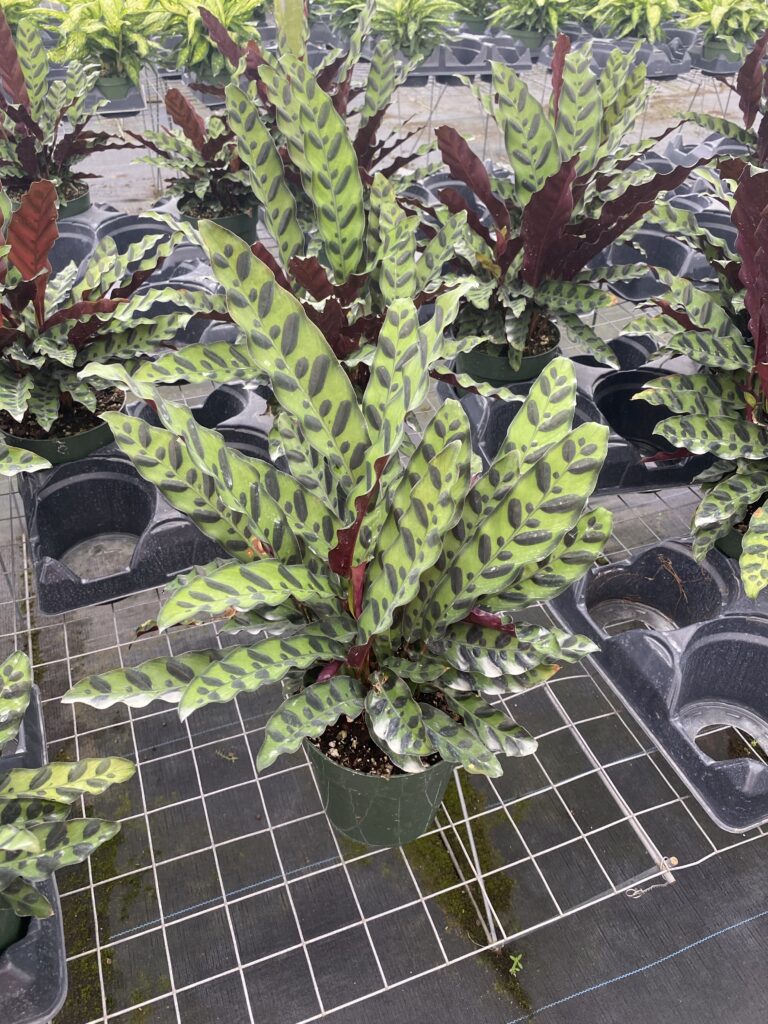
Lancifolia Calathea, commonly known as the Rattlesnake Plant, is admired for its striking foliage and unique patterns.
We offer these in 6″ and 8″ sizes.
Here’s a guide to Rattlesnake Plant care:
Appearance
Growth: Grows in a rosette formation, reaching heights of 12-24 inches.
Leaves: Features elongated, lance-shaped leaves with a distinctive pattern of dark green spots and lighter green stripes, resembling a rattlesnake’s skin.
Care Tips
Light: Prefers bright, indirect light. Avoid direct sunlight, which can scorch the leaves. Low light can cause slower growth and less vibrant colors.
Watering: Keep the soil consistently moist but not soggy. Water when the top inch of soil feels dry. Calatheas are sensitive to fluoride and salts, so use distilled or rainwater if possible.
Soil: Use a well-draining, peaty potting mix. A mix for tropical plants or one with added perlite or orchid bark works well.
Temperature: Thrives in temperatures between 65-80°F. Avoid temperatures below 50°F and protect from cold drafts.
Humidity: Prefers high humidity. Regular misting, a humidity tray, or a humidifier can help maintain the ideal moisture levels.
Fertilizing: Feed with a balanced, water-soluble fertilizer every 4-6 weeks during the growing season (spring and summer). Reduce feeding in fall and winter.
Repotting: Repot every 1-2 years or when the plant becomes root-bound. Spring is the best time for repotting.
Pruning: Remove any dead or damaged leaves at the base. Regularly check for and remove any yellow or brown leaves to maintain the plant’s health.
Pests and Problems: Watch for pests like spider mites, aphids, and mealybugs. Also, monitor for leaf issues such as browning or curling, which can indicate problems with watering or humidity.
If you have any questions, or are interested in purchasing, feel free to come by the nursery or give us a call at (352)735-8350. Our inventory is also available to see online.
